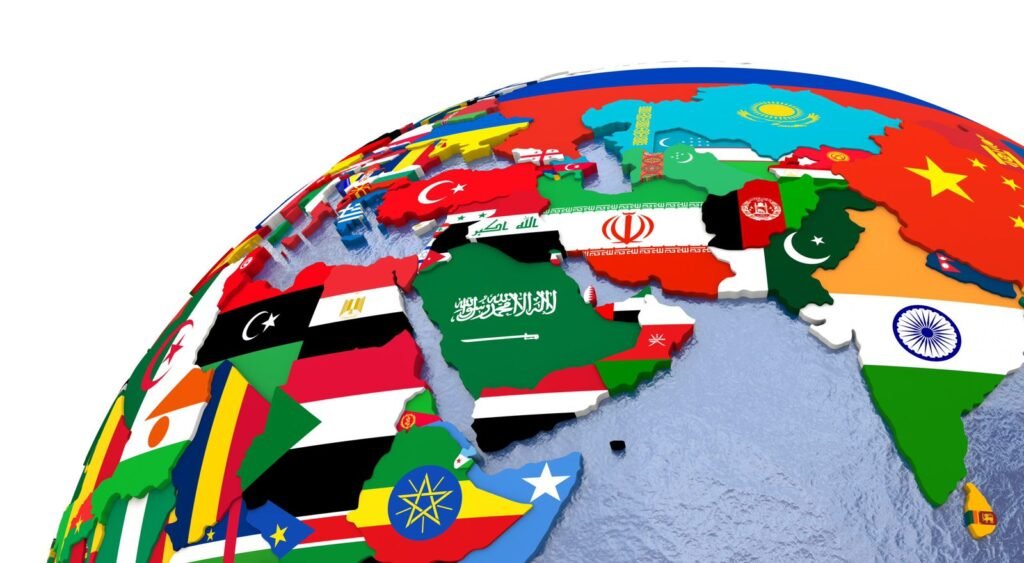
Fakih Fadilah Muttaqin
In a world where innovation drives economic power and global influence, the Muslim-majority nations find themselves paradoxically positioned. Despite possessing vast natural resources and strategic geopolitical importance, many of these countries remain peripheral players in the global innovation arena. This disparity raises a critical question: why, with abundant wealth and potential, does the Muslim world lag in shaping the future of technology and science?
A Landscape of Underutilized Potential
The Global Innovation Index (GII) 2024 paints a stark picture. Among the 139 economies assessed, only a handful of Muslim-majority countries rank within the top 50. The United Arab Emirates leads the region at 41st, followed by Saudi Arabia at 46th, and Qatar at 47th ([Arab News][1]). In contrast, nations like Switzerland, Sweden, and the United States dominate the top spots, reflecting their robust innovation ecosystems.
This ranking disparity is not merely academic. It translates into tangible differences in global influence, economic competitiveness, and the ability to shape international norms and standards. Countries at the forefront of innovation attract top talent, secure substantial investments, and lead in setting technological trends. Conversely, those trailing in innovation often find themselves dependent on external technologies and expertise, limiting their autonomy and growth prospects.
The Education-Innovation Disconnect
A significant factor contributing to this innovation gap is the state of education in many Muslim-majority countries. While there has been progress in expanding access to education, the quality and relevance of that education often fall short. According to Pew Research, the average Muslim adult has 5.6 years of schooling, with substantial regional variations ([Pew Research Center][2]). In some areas, particularly in sub-Saharan Africa and parts of South Asia, educational attainment remains low, hindering the development of a skilled workforce capable of driving innovation.
Even in countries with higher literacy rates, the focus of education systems often leans more towards rote memorization rather than fostering critical thinking, creativity, and problem-solving skills. This approach does not align with the demands of the modern knowledge economy, where innovation thrives on the ability to think outside the box and challenge existing paradigms.
Investment in Research and Development: A Missed Opportunity
Another critical area where many Muslim-majority countries fall short is in research and development (R\&D) investment. Globally, nations that lead in innovation typically allocate a significant portion of their GDP to R\&D. For instance, Israel invests approximately 5.7% of its GDP in R\&D, while countries like Sweden and South Korea also maintain high R\&D expenditure ([Business Perspectives][3]).
In contrast, most Muslim-majority countries invest less than 0.5% of their GDP in R\&D. For example, Iran, despite its substantial oil wealth, allocates only about 0.79% of its GDP to R\&D ([Royal Society][4]). This underinvestment stifles the development of homegrown technologies and limits the capacity to innovate independently.
The Role of Institutions and Infrastructure
Beyond financial investment, the institutional and infrastructural support for innovation is often lacking. Many Muslim-majority countries have limited numbers of universities and research institutions. For instance, the Federation of Universities of the Islamic World has membership of 217 universities, and the total number of universities and institutions of higher education and research in the Muslim world is just above 1,700 ([knowledge4all.com][5]). In comparison, countries like the United States and China boast thousands of such institutions, fostering a competitive and collaborative research environment.
Furthermore, the collaboration between academia and industry is often weak, hindering the translation of research into practical applications. In leading innovative nations, strong partnerships between universities and businesses drive technological advancements and economic growth. Without similar collaborations, many Muslim-majority countries struggle to move from research to real-world innovation.
A Call for Strategic Transformation
The path to innovation leadership for the Muslim world requires a multifaceted approach. First, there must be a concerted effort to reform education systems to emphasize critical thinking, creativity, and problem-solving skills. Curricula should be aligned with the needs of the modern economy, preparing students to contribute to and drive innovation.
Second, governments must increase investment in R\&D, recognizing it as a critical driver of economic development and global competitiveness. This investment should be accompanied by policies that encourage collaboration between universities, research institutions, and the private sector.
Lastly, building robust institutions and infrastructure that support innovation is essential. This includes establishing world-class universities, research centers, and innovation hubs that can serve as incubators for new ideas and technologies.
While the challenges are significant, the potential is immense. With strategic investment in education, research, and infrastructure, the Muslim-majority countries can transform their economies and play a leading role in shaping the future of global innovation. The time to act is now, for the benefits of innovation extend far beyond economic growth—they encompass enhanced global influence, improved quality of life, and a more equitable world.
In conclusion, the Muslim world stands at a crossroads. By addressing the gaps in education, R\&D investment, and institutional support, these nations can unlock their full potential and emerge as leaders in the global innovation landscape. The resources are available; what is needed is the vision and commitment to harness them effectively.